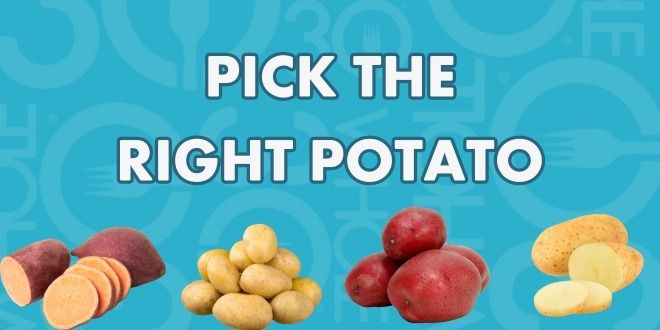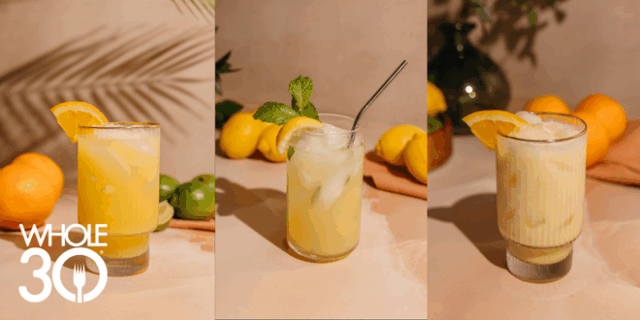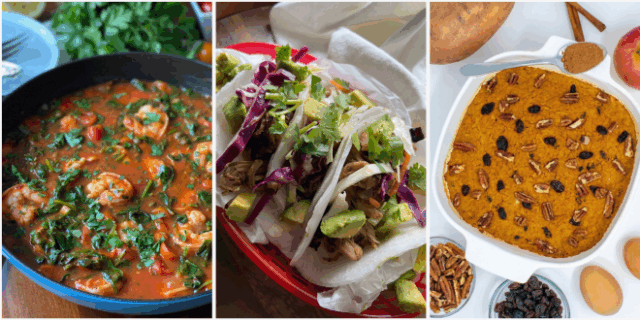All potatoes are great. The best one is usually the next one you pop in your mouth. That’s the beauty of this humble tuber—they’re delicious almost regardless of preparation or variety. But determining the best potato for the dish you’re making does actually matter.
The right choice can be the difference between a creamy or gluey mash, or a crunch that isn’t quite as satisfying as you’d like. For the most part, it all comes down to texture. The dishes you make with a slightly mismatched option will probably still be good—potatoes are just like that, but the meal won’t be as amazing as it could be. So it’s worth the effort.
And picking the best potato for your dish doesn’t require much heavy lifting. Usually, a recipe takes care of it, already listing the variety you should use. If that’s not the case—or you’re improvising—you don’t need to be a botanist to sort through the bevy of potato types to pick the right one. It’s all about the careful balance between two very basic components: water and starch.
Texture is a matter of moisture vs. starch
You might like them because they’re crispy, crunchy, buttery, creamy, fluffy, or pillowy. There’s no wrong reason to love a potato. But understanding what makes each of these textures possible will simplify your approach to picking the suitable variety for the job.
Potatoes are mainly water and starch. The ratio of those key components is what’s most commonly used to categorize them for culinary use. That’s because the balance determines whether a potato will keep its shape when cooked and what texture you will experience.
The more moisture, the waxier the texture will be. This means a potato with higher moisture content stays together better when cooked. If you put in slices of spud, you’ll end up with slices at the end of your cooking time. That’s because these potatoes keep their shape in the final dish due to the water-starch balance being tilted in favor of a tighter, more cohesive structure.
Potatoes high in starch—with lower moisture content—tend to fall apart easier during cooking. Without the water to hold the starch molecules together, these varieties don’t retain their shape. And that’s ideal, especially if you’re looking for a perfectly fluffy mash.
Without even knowing it, you’ve just learned the two main types of potatoes—waxy and starchy. But there’s no label specifying the type or percentages of water and starch on each potato at the grocery store. So what do you do? We’ll just have to dive deeper into each type to give you a cheat sheet for your next spud shopping spree.
Meet your mash: diving into starchy potatoes
Along with their starchier interior and higher sugar content, this type of potato (sometimes referred to as floury, too) is also bigger, with a thicker, coarser skin. Those are two telltale signs you’re grabbing starchy potatoes at the store.
Another way to pick out this type is the starchy liquid that leaks out when you cut one open. (Note: We’re not advocating cutting a bunch of potatoes up in your produce section to see what liquid is released.)
Russet is the most popular and recognizable name in starchy potatoes. They’re readily available, and are your best bet for baked or mashed dishes, as well as anything you want to be crispy and crunchy.
Waxing poetic: how to identify high-moisture options
If you’re in the market for a potato that looks fancier—and we’re talking from a purely visual standpoint—waxy types are your best option. Instead of large and rustically coarse-skinned, your average waxy variety is smaller, smoother, and sleeker looking. Russet potatoes look like they’d fit in doing chores on the farm. But a nice waxy option seems more red-carpet ready. It’s great to be able to see and feel the difference when you’re comparing potatoes at the store.
Appearance isn’t everything, though. The thin skin and more polished exterior is hiding a denser, firmer flesh that might even squeak a bit when you cut through it. You won’t be able to hear the sound until you get home, so pick one of these options when a waxy potato is required for your dish:
- Red Bliss
- Yellow
- Fingerling
- New or petite potatoes
Surprise! There’s a third type!
The world isn’t black and white, and potatoes aren’t just high-moisture (waxy) or high-starch (starchy). There’s a wonderful middle ground that gives us the versatility of the all-purpose potato.
As the name suggests, these varieties have a medium amount of moisture and a moderate amount of starch that makes them useable in a wide variety of dishes. They make a very serviceable mash, roast, bake, hash brown, salad, or gratin.
Versatility makes all-purpose potatoes a popular option for a lot of recipes you’ll find online (even on this very site). And they’re great to keep on hand to sub in when a more ideal waxy or starchy alternative is all the way at the store—and you don’t feel like going out again today.
There’s one clear golden child of the all-purpose world (pun intended): Yukon Golds. They’re probably the favorite option of your favorite chef or recipe site. And that’s because they are so delicious in so many different preparations. But White, Purple, and Blue varieties are also great options for filling your all-purpose potato needs.
A few words about sweet potatoes (and yams, for that matter)
Botanically speaking, sweet potatoes are not potatoes. They’re actually a root in the morning glory family (yep, the flower).
Culinarily speaking, sweet potatoes can be used almost exactly like a starchy spud. Their low moisture content and fluffy texture place them in the same broad category as Russets, so roast, bake, mash, or turn them into fries.
Yams aren’t the same as sweet potatoes or regular potatoes. They’re starchy tubers, but are in the lily family—unlike regular potatoes, which are nightshades. The confusion between yams and sweet potatoes is more the result of linguistic issues than anything else. Yams are very starchy, not sweet at all, have bark-like skin, and aren’t even easily available in the US. Don’t eat them raw, and prepare them boiled, baked, or fried.
Other considerations for answering what potato you should use in your dish
Texture and the ability to hold shape through cooking are key elements to consider when constructing any potato-centric dish. But they’re not the only determining factors for picking the option that’s best for your plate.
You should also ask the following questions to further cement your choice of variety:
- What taste am I looking for? Do I want something with a subtle sweetness? (Turn to sweet potatoes) Would some nuttiness help out my dish? (Maybe fingerlings would work.) Or do I just need something neutral to act as canvas for different flavors? (May we introduce you to our friend Russet?)
- What am I going to do with the skin? Will the preparation benefit from having skin? Do I even want to peel a potato today? (If you’re eating the skin, a waxy potato’s thin coating is probably best.)
- What size would be ideal for my recipe? Am I cooking the whole potato without slicing or cutting? (Probably looking for something waxy, like a fingerling or petite.) How big are the pieces I want to show up at the end of cooking? (Waxy means a stable structure through cooking.)
- Is there a particular shape that would work best with this meal? Something small and round for a roasted potato people can pop right in their mouths? (Again, waxy varieties tend to be smaller, but pick a smaller starchy potato if texture is key.) Something long and thin for dipping? (Starchy if you’re going to fry, or fingerling if you aren’t.) Do I just need the longest, roundest baked potato for dinner tonight? (Yes. You deserve it.)
And the best potato for ______ is
You’re now a potato-picking expert. Congratulations! We know you’ll crush it the next time there’s a question about what one would work best for a given recipe. Never again will you cook a soup where all your cubes have seemingly disappeared. No longer will your mashes be gluey because the potatoes were too waxy to be perfectly fluffy.
But even the experts can use a little help from time to time. So we’ve created a cheat sheet with the best potatoes for a variety of popular dishes.
- Creamy Mashed Potatoes: Best with a starchy variety, like a Russet. You can also use Yukon Gold, sweet, purple, or blue potatoes depending on the color and flavor you want.
- Smashed Potatoes: A waxier, smaller option will be the best choice here. They will hold up better and still have a buttery texture when smashed.
- Potato Salad: Since you want a potato salad and not a mashed one, waxier red potatoes are ideal.
- Hash Browns: Starchy or all-purpose varieties make the best hash browns. You’ll get the crispy texture you want from Russets or Yukon Golds.
- Roasted Potatoes: Choose your own adventure, here. If it’s more about crispness, then go with a starchy variety. But roasted fingerlings or new potatoes end up creamy and don’t require peeling.
- Soup with Chunks of Potatoes: Wet cooking methods make starchy potatoes fall apart. If you want to see and bite into intact pieces in your finished soup, waxy is the way to go.
- Creamy (blended) Potato Soup: We’ll say it again, wet cooking breaks apart starchy varieties. If you want a creamy soup that you’re blending anyway, Russets, sweet, or gold potatoes will do some of that work for you.
- Casserole: If you’re going for crispy topping, starchy is the best bet. If you want pieces or slices to survive the oven with some texture, waxy is your best way forward.
- Home Fries or Potato Wedges: Crispy and crunchy on the outside and creamy inside is ideal, so starchy or all-purpose are where you turn for these dishes.
- Baked Potato: The fluffy center of a baked potato—just waiting for all your delicious toppings—is best achieved with a regular ol’ Russet.
- Scalloped Potatoes: Structural integrity is important here, so you probably know the answer already. Waxy or all-purpose, please.
















